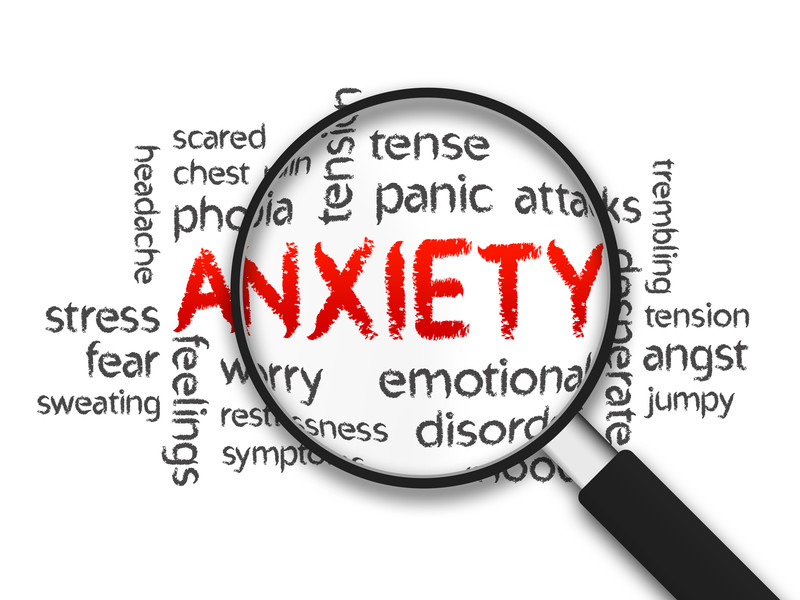How to Stop Anxiety Attacks
What Is An Anxiety Attack?
Anxiety Attacks are frightening events of intense fear, lasting for just a few minutes or up to several days. The term is often used interchangeably with Panic Attacks. This is because both types of attacks share the same physical symptoms, including:
- Pounding – rapid heart.
- Difficulty breathing.
- Chest tightness and/or pain.
- Faintness or dizziness.
Anxiety Attacks are usually brought-on by worry about a specific future event that you cannot imagine completing successfully. It can be about a real or imagined; situation, and/or, safety to one’s self or loved ones.
The DIFFERENCE BETWEEN ANXIETY ATTACKS AND PANIC ATTACKS is that unlike Panic Attacks, which are more intense, occur for NO REASON and are of a short duration… Anxiety Attacks are created by specific stressors. Once the stress element (reason) is removed, the anxiety attack ends.
Another difference, believed by many psychiatrists, is that during an anxiety attack, the minds focus is upon the cause of this worry, while a Panic Attack’s primary focus is upon the intense, physical sensations being felt. These thoughts can create a fear of death and dying, which in-turn, can cause a long-term, Anxiety Attack, precipitating from the anticipation of the possibility of having another Panic Attack.
The specific worry or stressor is perceived as a threat. It triggers a part of the brain designed to protect you, by reacting in what is commonly called the flight or fight response. This activity is channeled through the sympathetic nervous system, which engages the adrenal glands to flood the blood stream with adrenaline and cortisol.
These chemicals are your body’s natural mechanism to help you suddenly freeze, run or fight an attacker. They tighten the blood vessels, causing an increase in heart rate and breathing. This sends more oxygen to the parts of the body needed for a strong physical reaction. All of the PHYSICAL symptoms listed above are caused by this process. The feeling of fear is actually created by these chemicals which spirals into the Anxiety Attack.
Generalized Anxiety Disorder (GAD) is often characterized by periods of anxious thoughts and worry without a cognitive reason. But these thoughts can spiral “out-of-control” and become an intense Anxiety Attack. As the mind’s focus shifts away from the “worry reason”, to the feelings of the physical effects, the Anxiety Attack can transform into a full fledged Panic Attack.
How to Quickly End an Anxiety Attack
In order to stop an anxiety attack, the brain must stop engaging the “Flight or Fight Response” through the Sympathetic Nervous System, and begin engaging the “Relaxation Response” through the Parasympathetic Nervous System. Providing that the state of fear has not escalated into panic, the following techniques will easily bring about a calm state! These techniques are more fully explained in the free guide, “The Top 10 Self-Help Techniques for Fast Anxiety Relief“.
1. Quiet Your Nervous System Through Regulated Breathing and Relaxation Techniques.
During an anxiety attack, most people will notice that their breathing becomes fast… shallow… and from the top of their chest (diaphragm). This often creates a feeling that it’s difficult to breath. When you consciously regulate your breathing, you can switch your mind from a state of fearful panic, to a state of calmness, in just a few minutes.
Breathing helps to regulate many of the natural rhythms of the body, including the heart rate. By breathing slowly and from the bottom of your chest (your belly), you can engage the “Relaxation Response” through the Parasympathetic Nervous System and slow-down a pounding heart.
2. Refocus Your Attention to the Present Moment.
Close your eyes and acknowledge (and accept) the Strongest Physical Feeling you notice. Take another deep breath and slowly exhale.
Now, open your eyes and focus upon the sights and sounds of the environment around you. Then, engage in some other activity, mentally or physically. Many anxiety sufferers find it useful to schedule a post-poned, worry time for later in the day. Instructions for this technique are covered in chapter 4.
3. Change Your Perception of the Future Event You’re Worried About with Mental Imagery.
Anxiety is often defined as; a fear-based emotion about a future event that you’re unable to imagine completing successfully. Just think about the possibility of changing, subconsciously, your perception of anything you’re anxious about into, “It’s already happened, and the outcome was positive… and WAS completed successfully!
This technique must be performed using a form of self hypnosis and a specific form of mental imagery called the “Time Line Anxiety Cure Technique. You will learn how to perform this technique during your first private session of the InstaCalm Anxiety Treatment Protocol at the InstaCalm Hypnosis Anxiety Treatment office in San Jose California.
Personal Anxiety Coaching Available
My office in San Jose, California, helps men and women living in the San Jose and San Francisco South Bay Area. This office serves the cities of: Sunnyvale, Mountain View, Santa Clara, Milpitas, Oakland, Saratoga, Los Gatos, Los Altos, Palo Alto, and Burlingame. I provide a consultation at no charge, in my office or you can schedule a phone consulltation online.
I also provide long distance coaching by telephone or Skype.





